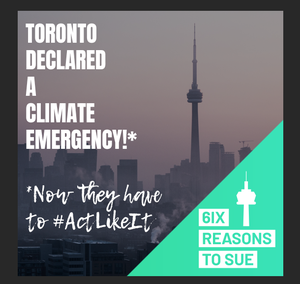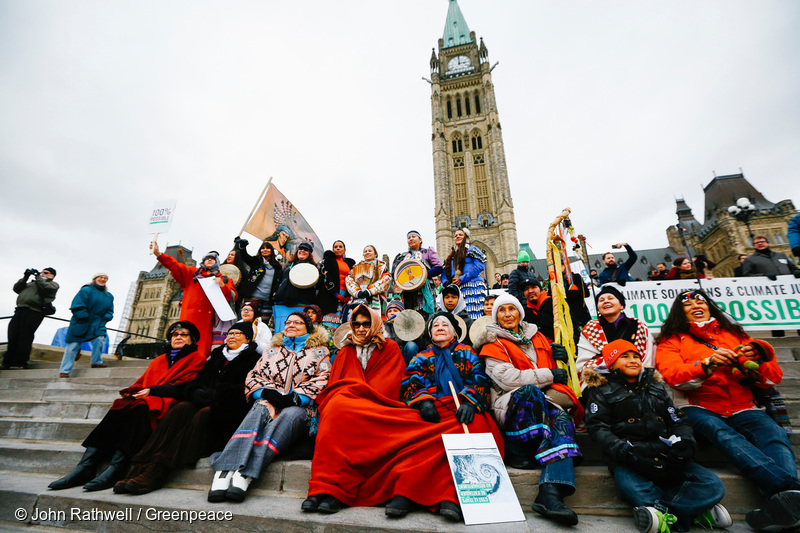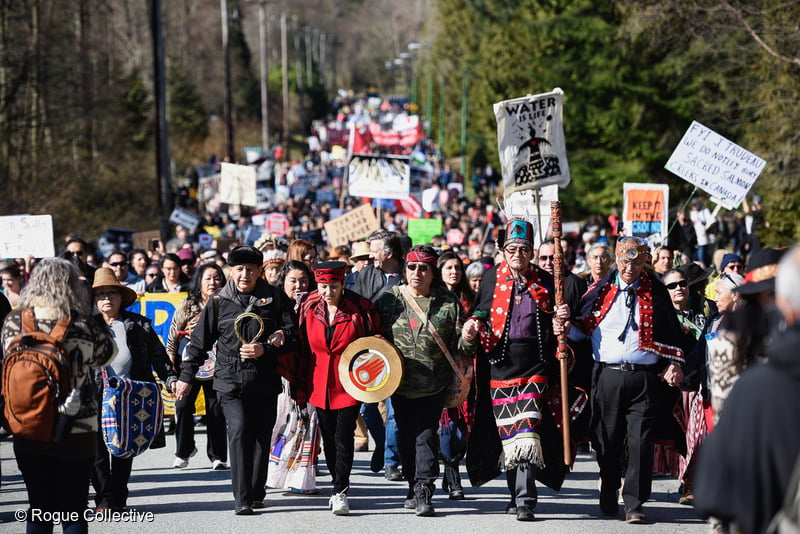Watching Toronto City Council debate its climate emergency declaration, it was clear that even the most battle-scarred of politicos had been moved (dare I say scared?) by the tens of thousands of youth-led climate strikers who’d marched past City Hall the previous Friday.
The motion – co-sponsored by Mayor John Tory and Councillor Mike Layton – passed unanimously. Greenpeace supported it because it’s more than just words, though there’s still a lot of work required to turn these intentions into action.
Part of my remarks at today’s city council debate in climate emergency and acceleration motion. pic.twitter.com/zbU1BFzbS3
— Mike Layton (@m_layton) October 3, 2019
When Councillor Layton first started meeting with environmental groups about the motion, we were unanimous that it had to commit the City to doing more, faster and in an inclusive way. The Toronto Environmental Alliance (TEA) then took the lead on gathering input from community groups and youth climate strikers, and pulled together a set of recommendations endorsed by 47 groups that set the frame for the Council motion.
In declaring a climate emergency, Toronto City Council has committed to:
- Set a net zero greenhouse gas emissions target in line with keeping warming below 1.5 degrees. The City has set a new target of net zero by at least 2050, and will look at ways to achieve this target by 2040. It will also set interim targets and carbon budgets to ensure that we are on track to meet those long-term targets.
- Explore financing mechanisms to adequately fund climate action in the 2021 budget cycle (more on this below).
- Meaningfully consult and cooperate with Indigenous communities on the development and implementation of the TransformTO climate action plan, in line with the City’s commitment to the United Nations Declaration on the Rights of Indigenous Peoples.
- Apply the City’s Equity Lens to TransformTO decision-making in order to ensure that strategies include and benefit equity-seeking groups.
- Collaborate with youth to increase their participation in the development and implementation of TransformTO.
- Apply a climate lens to evaluate the climate impacts of major City decisions including financial decisions.
- Create a low-carbon jobs strategy that supports a decent work agenda and expands green industry sectors.
- Initiate a plan to become a green investment City and exclude fossil fuels from City investments.
Turning these commitments into reality is still going to take a lot of work – keeping up the pressure in a context of competing budget priorities and a pro-fossil fuel lobby that never quits. Toronto does have some credibility on the file, as greenhouse gas emissions within the city are down 44% relative to 1990 (with the provincial coal phase-out lending a helping hand).
The easy reductions, however, are largely gone. Getting to net-zero is going to be harder. And expensive, though of course doing nothing or not enough is terrifyingly more expensive.
Achieving what’s in this motion is going to take a lot of effort from a lot of people, over a long period of time. This is why it has been inspiring to see so much Green New Deal-style organizing – which recognizes opportunities for greater equity and a better kind of economy – in the lead-up to the emergency declaration.
One piece of the puzzle, and one that Greenpeace Canada has been advancing with allies, is to make big polluters pay their fair share of the costs of acting on the climate emergency.
Just like tobacco companies misled the public about the health danger of cigarettes, oil companies hid the fact that they knew their oil and gas products would lead to climate change. For decades, Big Oil funded efforts to cast doubt on the science they knew to be true. Now, floods, wildfires, storms and heat waves are costing Canadians billions of dollars in damage. Unchecked climate change will make this ever-worse, affecting all us of — but the most vulnerable people are at the greatest risk.
City staff are currently exploring legal avenues for making oil companies pay their fair share of the Toronto costs of dealing with the climate crisis they created.
Tell your councillor to get on board.





Discussion
Even with the notably numbered climate change student protests, I still see humankind’s dire environmental situation maintained by leaders essentially caught within a virtual corpocracy governed by huge fossil fuel interests and other detrimental big business. To me our existence is somewhat analogous to a cafeteria lineup consisting of diversely societally represented people, all adamantly arguing over which identifiable traditionally marginalized person should be at the front and, conversely, at the back of the line; and, furthermore, to whom amongst them should go the last piece of quality pie and how much should they have to pay for it—all the while the interstellar spaceship on which they’re all permanently confined, owned and operated by the fossil fuel industry, is burning and toxifying at locations not normally investigated. What is universal is that they’re all simply too exhausted and preoccupied with just barely feeding and housing their families on a substandard, if not below the poverty line, income to criticize the former for the great damage it’s doing to our planet’s natural environment and therefore our health, particularly when that damage may not be immediately observable. As a species, we really can be so heavily preoccupied with our own individual admittedly overwhelming little worlds, that we’ll miss the biggest of pictures.
As municipal governments unanimously declare climate emergencies, it's depressingly inadequate. Justin Trudeau’s Liberal MPs did so similarly, while his inner circle went ahead with an oxymoronic re-approval of the Trans Mountain pipeline expansion. This will see a tripling of the flow of diluted bitumen—the world’s dirtiest oil—and a seven-fold increase in waterway crude-shipping traffic. Renowned linguist and cognitive scientist Noam Chomsky has noted that while the mainstream news-media will report on climate change and related extreme weather events, it will then go to business-as-usual reporting that seems to encourage stronger fossil fuel markets and by extension its consumption. This is one reason I still see humankind’s dire environmental situation as somewhat analogous to a cafeteria lineup consisting of diversely societally represented people, all adamantly arguing over which identifiable traditionally marginalized person should be at the front and, conversely, at the back of the line; and, furthermore, to whom amongst them should go the last piece of quality pie and how much should they have to pay for it—all the while the interstellar spaceship on which they’re all permanently confined, owned and operated by the fossil fuel industry, is burning and toxifying at locations not normally investigated.